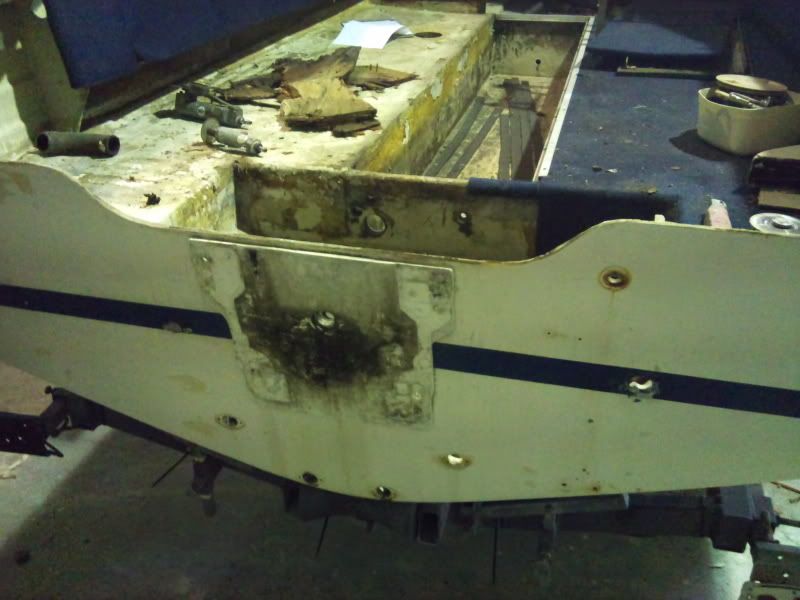Hey guys, following on from:
http://www.ausfish.com.au/vforum/sho...d.php?t=169699
My transom is slop, too much movement and the motor bolts have started going through the inner casing, and cracks are appearing along the splashwell.
I am looking at tackling this myself, with the help of some mates who have fibreglassing experience, when it comes to that. So basically that part is covered.
The boat is a 1990 Haines 1950R signature, and the transom looks a lot different to all the DIY guides that I can find (on the net, magazines and boat building books).
I am looking to do this from the outside, but I am not sure where to cut as it is a different shaped transom than the ones seen in the vast amount of tutorials. From looking at it, my current plan of attack is to cut the outer skin for the width of the splashwell, but leaving a lip to slide the new ply in from the top. The transom style of the haines is different, with angles going everywhere! It doesnt make it easy hehe. But wheres the fun and satisfaction in easy
Basically below the splash well is as hard as a rock, but above the splash well there is flex, cracking and shearing as seen in the pics.
I am unsure as to use polyester or epoxy resin. Some input here would be much appreciated
I expect to not have to touch the inner skin, but that all depends on the amount of rot in the existing ply.
I will be taking plenty of pics of this project, set to start this weekend
Any help, tips or suggestions are greatly appreciated.
I will start off with some pics of the boat "as-is".
Thanks for reading and I hope over the coming weeks I share some interesting, and hopefully trouble free repairs!
Cheers






 Reply With Quote
Reply With Quote














